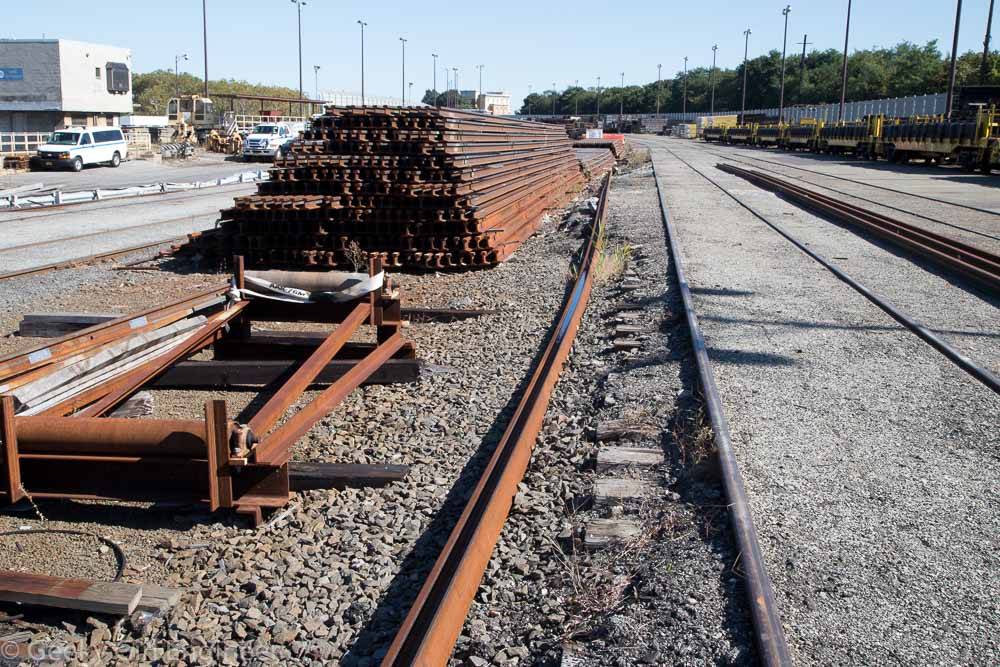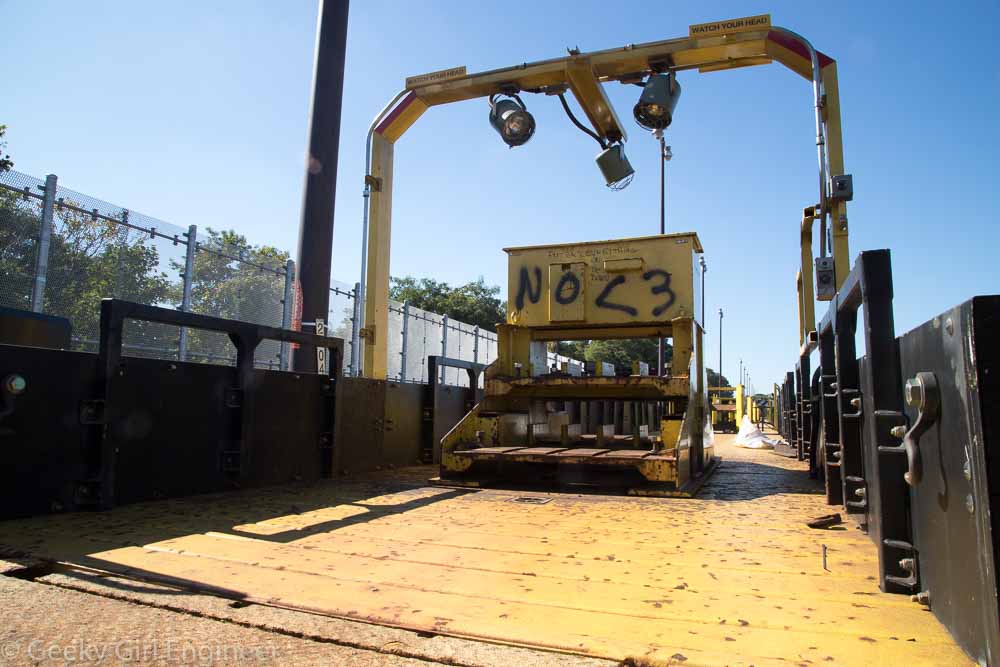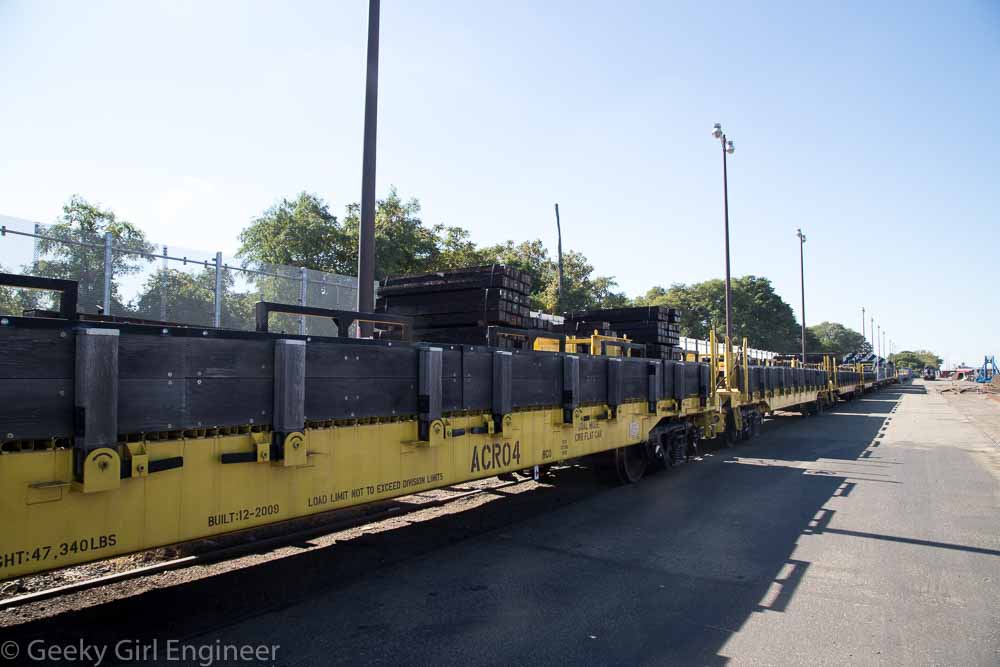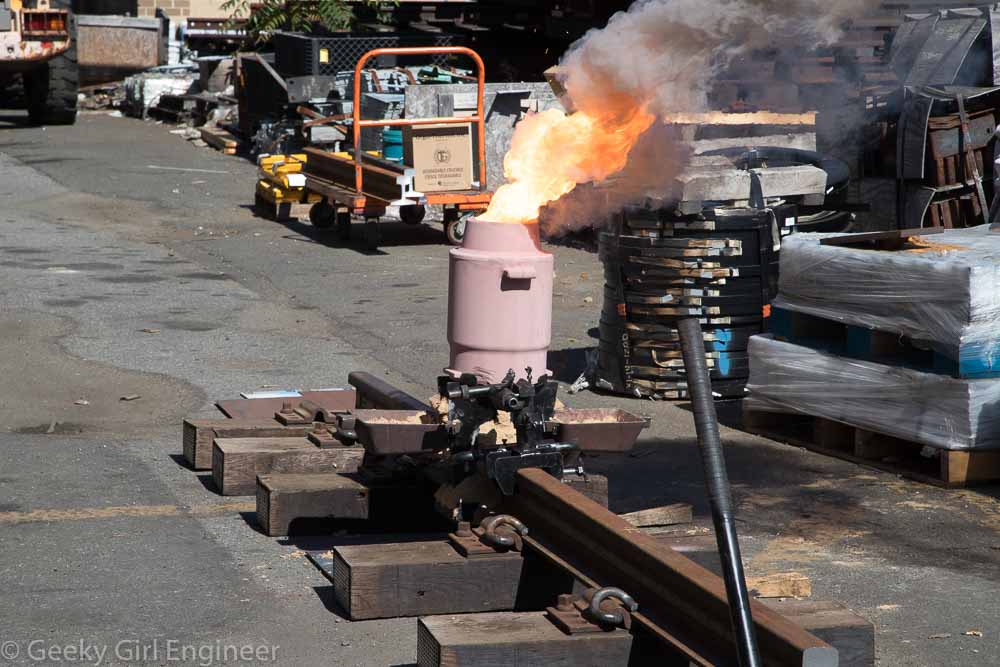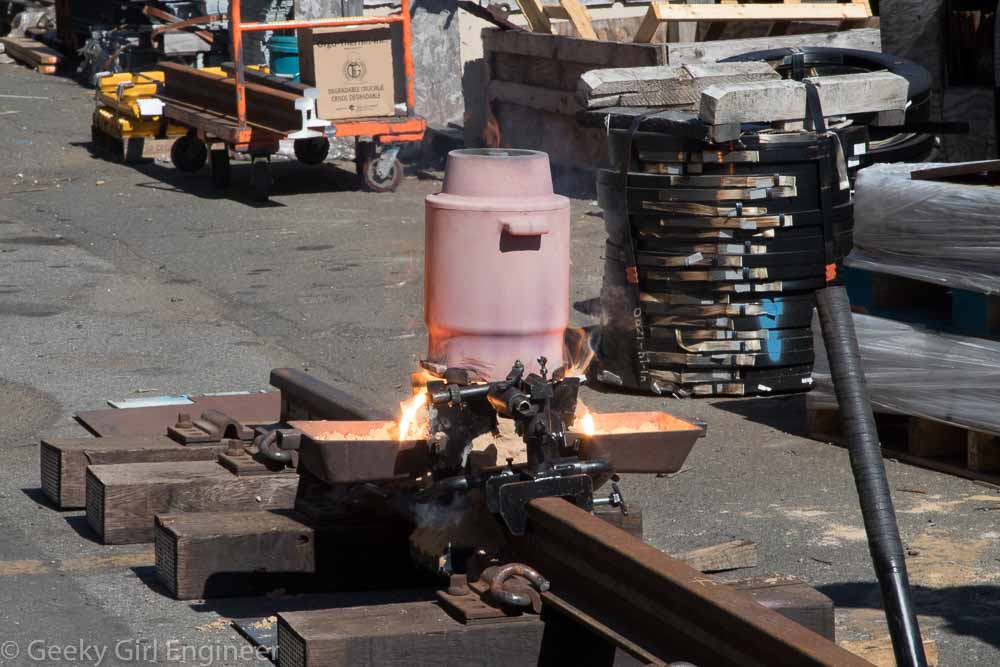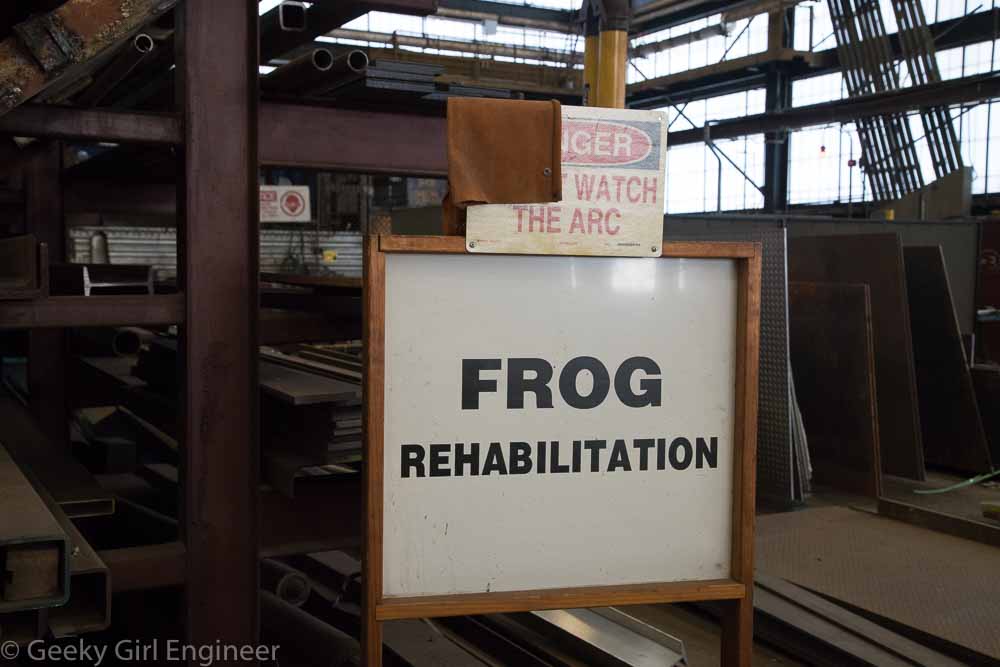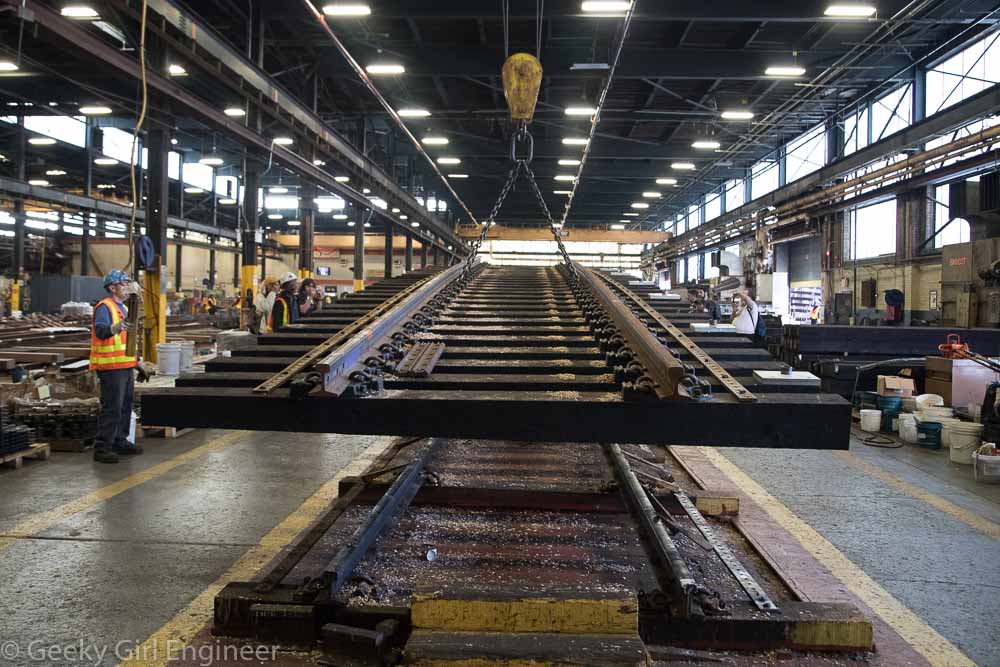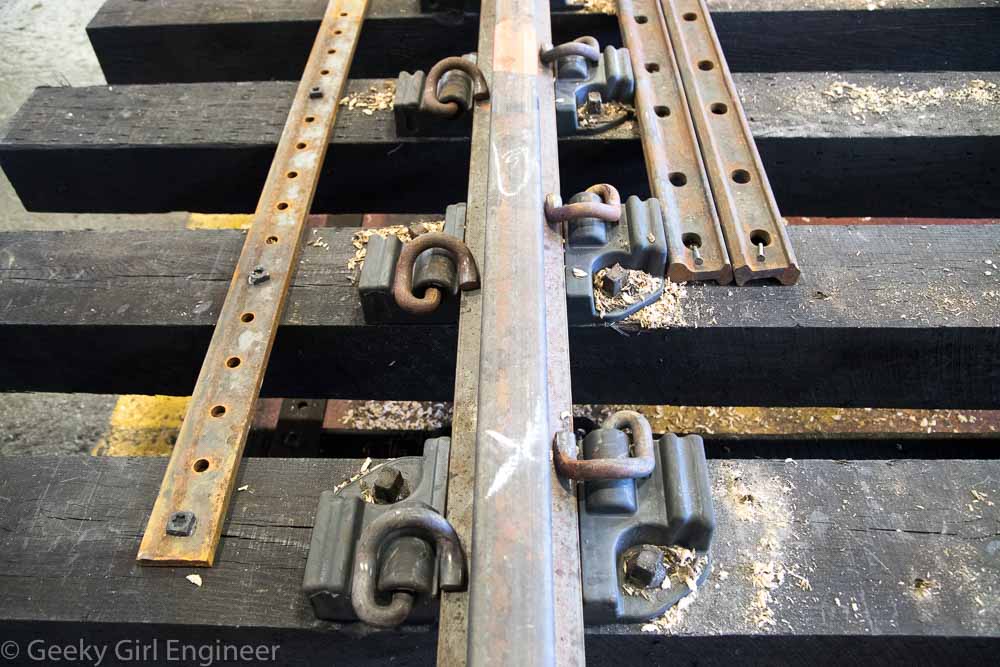I took another fun, educational tour with the New York Transit Museum. This tour was of MTA’s Linden Yard where they rehabilitate and replace subway track and switch gear. I have been on several yard tours, and this one was very different. There were no cars being repaired. It was strictly rails. There are three types of rail areas: underground, aboveground on the surface, and aboveground on a structure (elevated). They repair and build rail differently depending on where it is.
In some areas, they can lay continuous welded rail, which speeds up replacement. They weld long lengths of rail together in the yard and then transport them to the location to be laid.
The continuous welded rail is transported in specialty rail cars that are joined together and can transport eight of these continuous welded rail.
They use thermite to weld lengths of rail together. The process is awesome to watch.
They also rehabilitate frogs, aka rail switches.
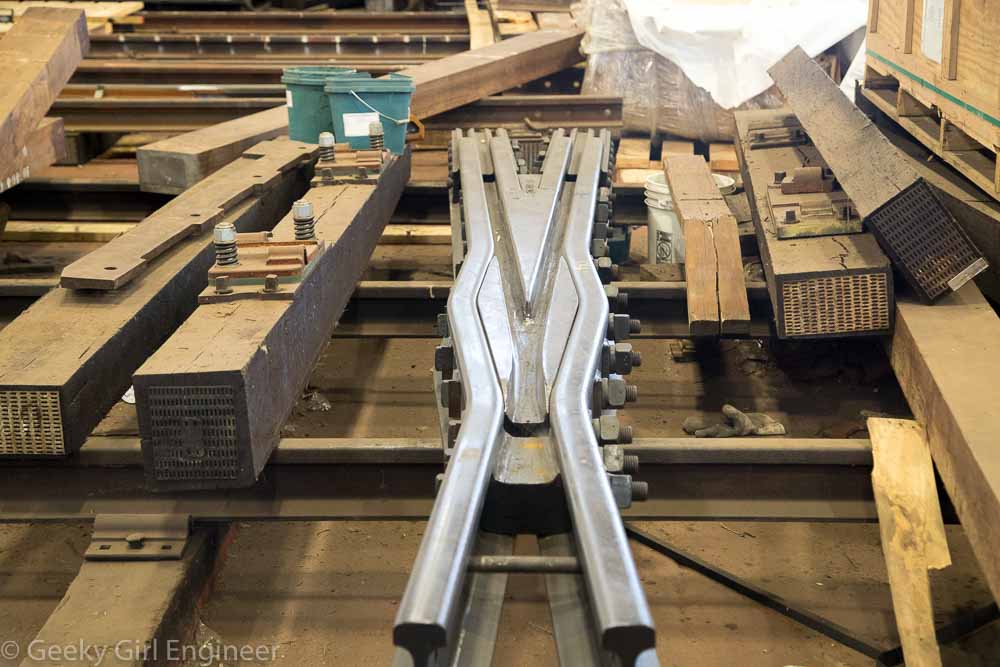
A “frog”, switching track so named because it is said to look like a frog laying down with limbs spread out
They build complete segments of rail attached to the ties. For curved sections of track, they have to rip the ties at precise angles to give the rail curve whatever angle it needs for the train to take the curve safely.
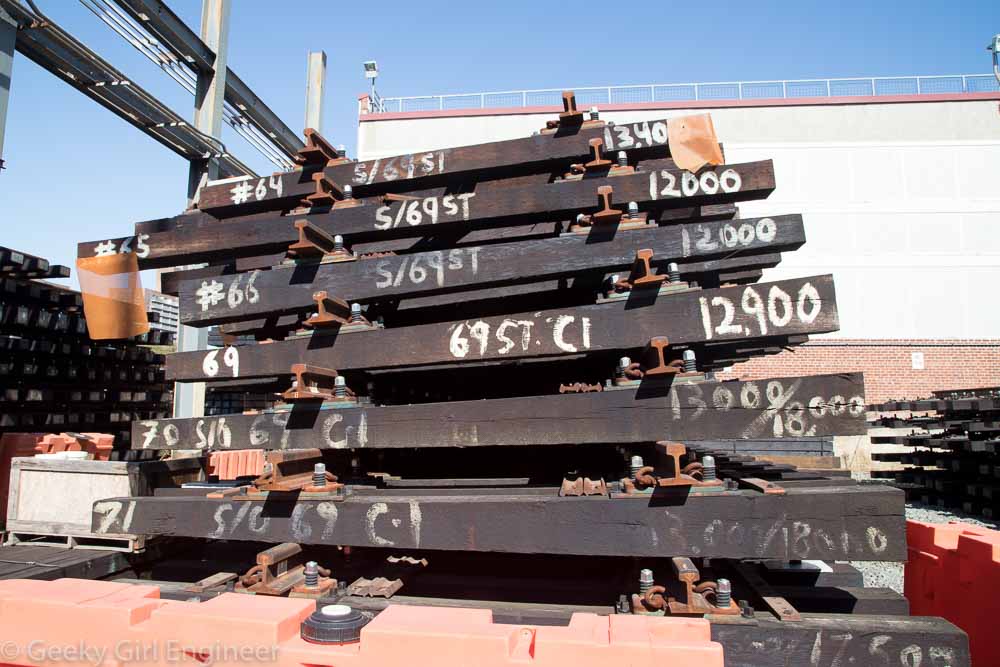
Stacked rails on ties. Note that some of the ties are cut at an angle to lay in track curves. The metal plates used to join the rail and ties have a rubber bottom to cushion the train and reduce noise.
They also build the more complicated rail junctions.
They also repair the third rail. Third rails are not welded together but are joined using a very thick copper wire that is welded to each segment.

